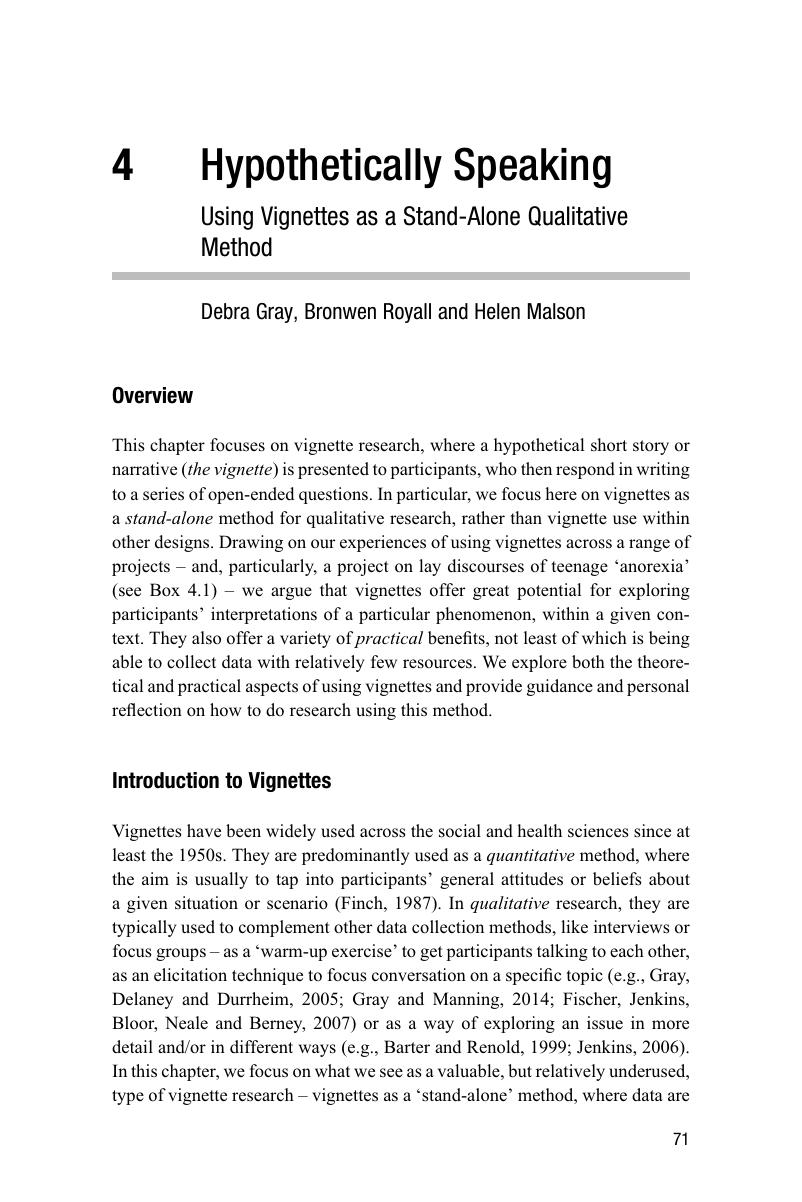Book contents
- Collecting Qualitative Data
- Collecting Qualitative Data
- Copyright page
- Contents
- Figures, Tables and Boxes
- Acknowledgements
- Contributors
- Foreword
- 1 Collecting Textual, Media and Virtual Data in Qualitative Research
- Part I Textual Data Collection
- 2 Short but Often Sweet
- 3 Once Upon a Time …
- 4 Hypothetically Speaking
- 5 ‘Coughing Everything Out’
- Part II Media Data Collection
- Part III Virtual Data Collection
- Afterword
- Glossary
- Index
- References
4 - Hypothetically Speaking
Using Vignettes as a Stand-Alone Qualitative Method
from Part I - Textual Data Collection
Published online by Cambridge University Press: 06 October 2017
- Collecting Qualitative Data
- Collecting Qualitative Data
- Copyright page
- Contents
- Figures, Tables and Boxes
- Acknowledgements
- Contributors
- Foreword
- 1 Collecting Textual, Media and Virtual Data in Qualitative Research
- Part I Textual Data Collection
- 2 Short but Often Sweet
- 3 Once Upon a Time …
- 4 Hypothetically Speaking
- 5 ‘Coughing Everything Out’
- Part II Media Data Collection
- Part III Virtual Data Collection
- Afterword
- Glossary
- Index
- References
Summary

- Type
- Chapter
- Information
- Collecting Qualitative DataA Practical Guide to Textual, Media and Virtual Techniques, pp. 45 - 70Publisher: Cambridge University PressPrint publication year: 2017
References
Further Resources: Online
The companion website for Braun and Clarke’s (2013) Successful Qualitative Research: A practical guide for beginners provides an introduction to the vignette method and examples of research materials for a vignette task on transparenting: www.uk.sagepub.com/braunandclarke/study/additional.htm
Further Resources: Readings
References
- 13
- Cited by



